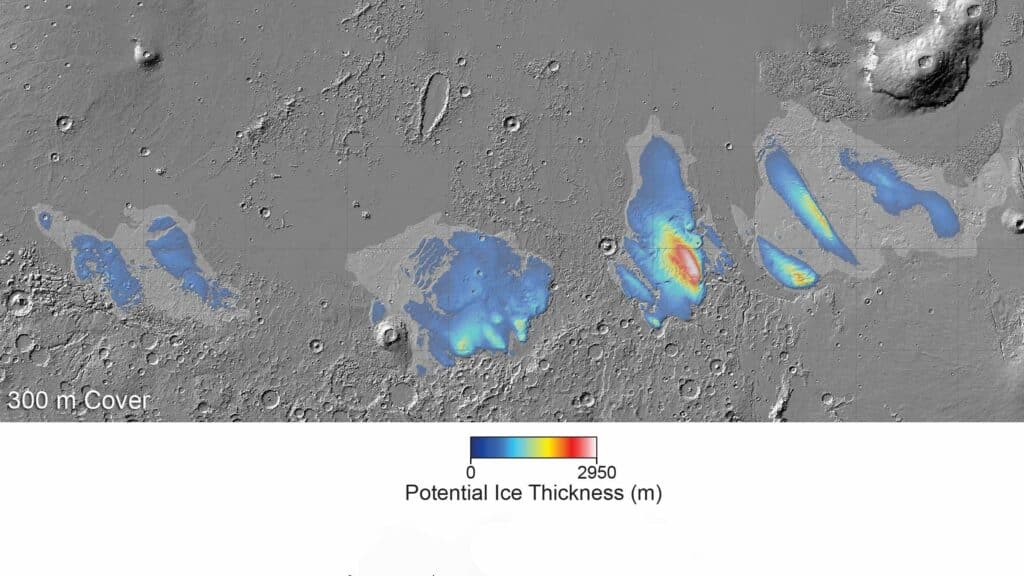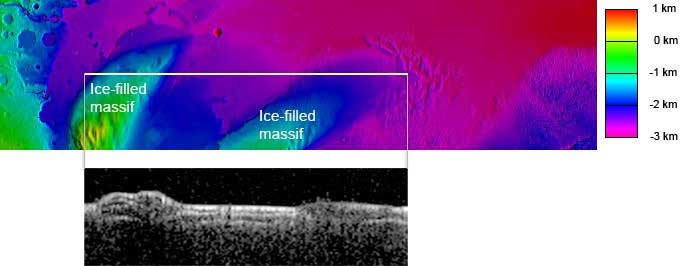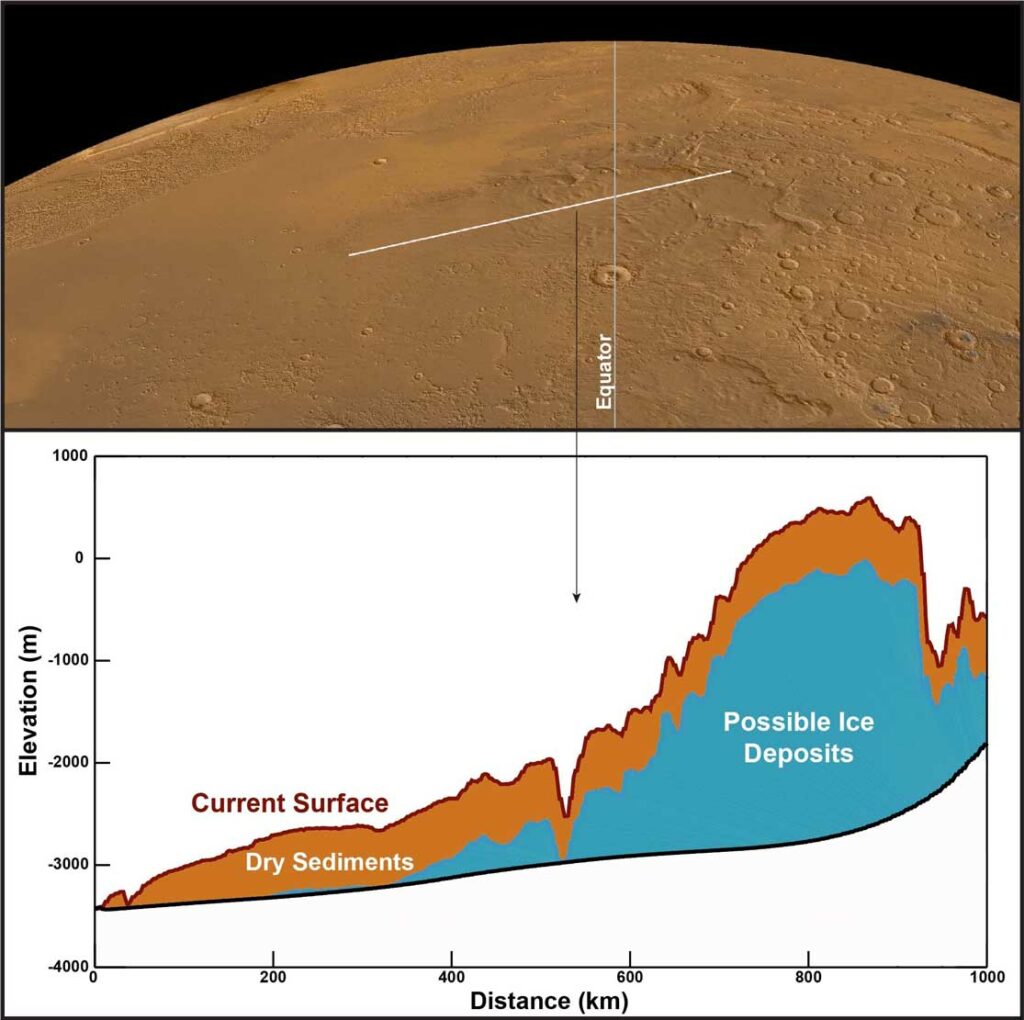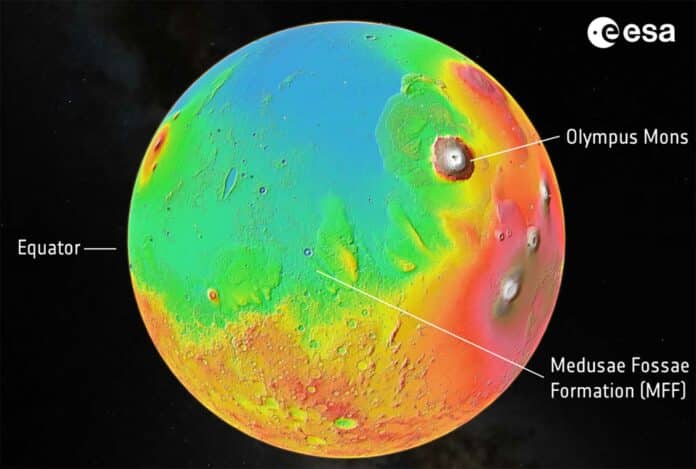The European Space Agency‘s Mars Express has returned to one of Mars’s enigmatic features to understand its composition better. The latest findings indicate the presence of layers of water ice extending several kilometers beneath the surface, marking the most significant amount of water ever detected in this region of the planet.
More than 15 years ago, Mars Express examined the Medusae Fossae Formation (MFF) and uncovered extensive deposits reaching depths up to 2.5 kilometers. Initial observations could have clarified the composition of these deposits, but recent research has now identified them as layers of water ice.
Thomas Watters of the Smithsonian Institution, USA, lead author of both the new research and the initial 2007 study, said, “We’ve explored the MFF again using newer data from Mars Express’s MARSIS radar and found the deposits to be even thicker than we thought: up to 3.7 km thick. Excitingly, the radar signals match what we expect from layered ice and are similar to the signals we see from Mars’s polar caps, which we know to be very ice-rich.”

If melted, the water ice contained within the Medusae Fossae Formation (MFF) would be sufficient to cover the entire surface of Mars with a layer of water measuring 1.5 to 2.7 meters in depth. This represents the largest amount of water ever discovered in this specific region of Mars and is equivalent to the volume needed to fill Earth’s Red Sea.
The Medusae Fossae Formation (MFF) comprises expansive features sculpted by the wind, spanning hundreds of kilometers in width and several kilometers in height. Located at the boundary between Mars’s highlands and lowlands, these features are potentially the most significant individual source of dust on the planet and represent one of the most extensive deposits.

Initial observations by Mars Express indicated that the MFF appeared relatively transparent to radar and had low density—characteristics consistent with icy deposits. However, scientists couldn’t definitively rule out a drier possibility, suggesting that these features might be colossal accumulations of windblown dust, volcanic ash, or sediment instead.
Co-author Andrea Cicchetti of the National Institute for Astrophysics, Italy, said, “Here’s where the new radar data comes in! Given how deep it is, if the MFF was simply a giant pile of dust, we’d expect it to become compacted under its weight. This would create something far denser than what we see with MARSIS. And when we modeled how different ice-free materials would behave, nothing reproduced the properties of the MFF – we need ice.”

The recent findings indicate that the Medusae Fossae Formation (MFF) likely consists of layers comprising a combination of dust and ice. These layers are then covered by a protective layer of dry dust or ash, which measures several hundred meters in thickness.
Colin Wilson, ESA project scientist for Mars Express and the ESA ExoMars Trace Gas Orbiter (TGO) said, “This latest analysis challenges our understanding of the Medusae Fossae Formation, and raises as many questions as answers. How long ago did these ice deposits form, and what was Mars-like at that time? These massive deposits would change our understanding of Mars’s climate history if confirmed to be water ice. Any ancient water reservoir would be a fascinating target for human or robotic exploration.”
The extensive and strategically located icy deposits within the MFF could hold significant value for future Mars exploration endeavors. Missions to Mars will likely land near the planet’s equator, away from the ice-rich polar caps or high-latitude glaciers. The discovery of water ice in this region is crucial for potential human missions to Mars, as water is a vital resource that can support various essential needs for life and exploration on the planet.
